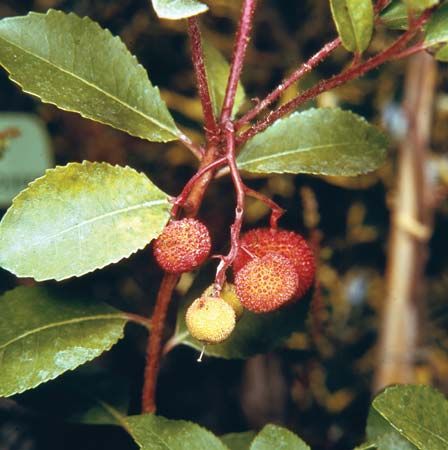arbutus
Our editors will review what you’ve submitted and determine whether to revise the article.
- Related Topics:
- evergreen
- Ericaceae
- madrona
- strawberry tree
arbutus, (genus Arbutus), genus of about 11 species of broad-leaved evergreen shrubs or trees of the heath family (Ericaceae). The plants are native to southern Europe and western North America, and several species are cultivated as ornamentals.
Physical description
Arbutus species are characterized by white or pink bell-shaped flowers in loose terminal clusters and by many-seeded fleshy red or orange berries with a distinctive irregular surface. The simple leaves are alternate and stalked. Many species have a distinctive reddish bark.
Major species
Variously known as madrona, Pacific madrona, laurelwood, and Oregon laurel, A. menziesii occurs in western North America from British Columbia to California. It grows about 23 metres (75 feet) tall. The dark oblong glossy leaves are 5–15 cm (2–6 inches) long and are coloured grayish green beneath. The whitish flowers grow in pyramidal clusters 7–23 cm (3–9 inches) tall. As the tree grows, the old bark peels off, revealing reddish or cinnamon-coloured bark beneath. Texas madrone (A. xalapensis) and Arizona madrone (A. arizonica) are both found in the southwestern United States and into northern Mexico.

The strawberry tree, A. unedo, is native to southwestern Europe but was introduced into warm regions of western North America. It grows 3–9 metres (10–30 feet) tall, with one to several trunks, and has lustrous elliptic or oblong leaves about 9 cm (3.5 inches) long. The branches are sticky and hairy. The white or pinkish flowers droop in clusters, and the fruit, edible but tasteless, resembles a strawberry in size and colour. The Greek strawberry tree (A. andrachne), found in the Mediterranean region and the Middle East, also has edible fruits.
The trailing arbutus belongs to the genus Epigaea, also a member of Ericaceae.


















